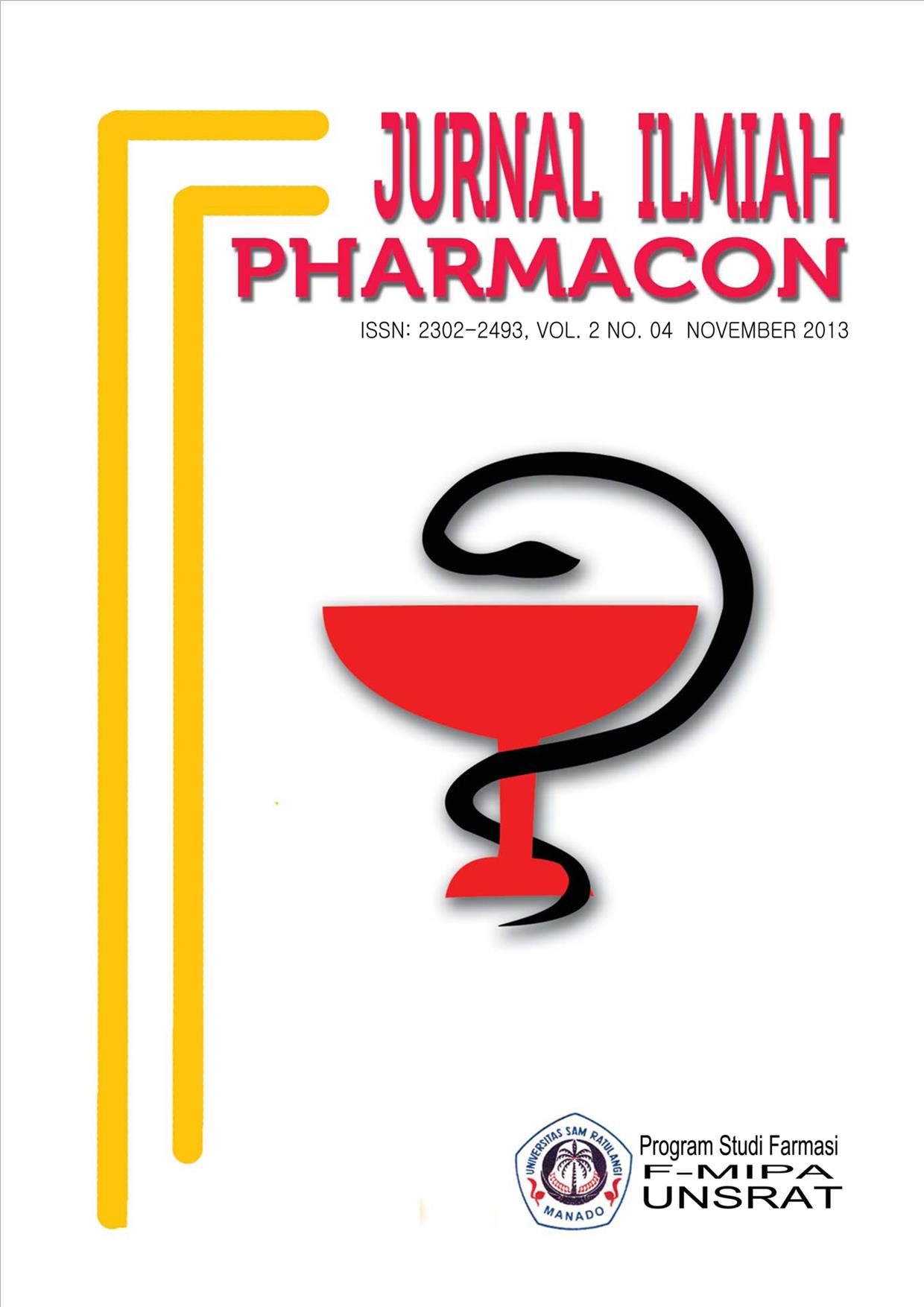UJI AKTIVITAS ANTIBAKTERI EKSTRAK DAUN EKOR KUCING (Acalypha hispida Burm. F.) TERHADAP BAKTERI Staphylococcus aureus DAN Escherichia coli SECARA IN-VITRO
DOI:
https://doi.org/10.35799/pha.4.2015.8859Abstract
UJI AKTIVITAS ANTIBAKTERI EKSTRAK DAUN EKOR KUCING
(Acalypha hispida Burm. F.) TERHADAP BAKTERI
Staphylococcus aureus DAN Escherichia coli
SECARA IN-VITRO
Â
Kevin Caesar Moningka1), Novel S. Kojong1), Sri Sudewi1)
1) Program Studi Farmasi FMIPA UNSRAT Manado, 95115
Â
Â
ABSTRACT
Â
Through the last view years, the incidence of infectious disease by microorganisms was increase, one of which is bacterial pathogens. This research aims to investigate antibacterial activity of hexane, etil asetat, and ethanol extract, and the most effective of ekor kucing leaves of Staphylococcus aureus and Escherichia coli. Extraction was done by maceration used hexane, etil asetat and ethanol as the solvents. The antibacterial activity test used Kirby and Bauer agar difussion method. The results was showed that all the extracts have antibacterial activity. Ethanol extract has the highest antibacterial activity compared to the other extracts against Staphylococcus aureus (19.33 mm) and Escherichia coli (18.50mm). The result of antibacterial activity test was analyzed with Oneway Anova, continue with Turkey test. The result showed that ekor kucing leaves extract with concentration 10%, 20%, 40%, 80% has antibacterial activity against the test bacterial. The concentration 80% is the most effective concentration with a high inhibition diameter of Staphylococcus aureus and Escherichia coli.
Keywords :   Acalypha hispida Burm. F., Antibacterial activity, Staphylococcus   aureus, Escherichia coli.
Â
ABSTRAK
Selama beberapa tahun terakhir, terjadi peningkatan timbulnya penyakit infeksi yang disebabkan oleh mikroorganisme salah satunya ialah bakteri patogen. Penelitian ini bertujuan untuk mengetahui aktivitas antibakteri ekstrak heksana, etil asetat, etanol dan ekstrak yang paling efektif daun ekor kucing terhadap bakteri Staphylococcus aureus dan Escherichia coli. Ekstraksi dilakukan dengan cara maserasi menggunakan pelarut heksana, etil asetat dan etanol. Pengujian aktivitas antibakteri menggunakan metode difusi agar (Kirby dan Bauer). Hasil uji aktivitas antibakteri menunjukkan semua ekstrak memiliki aktivitas antibakteri. Ekstrak etanol memiliki aktivitas antibakteri yang paling tinggi dibandingkan dengan ekstrak yang lainnya terhadap bakteri Staphylococcus aureus (19.33 mm), dan Escherichia coli (18.50 mm). Hasil uji aktivitas antibakteri dianalisa dengan metode Oneway Anova, dilanjutkan dengan Uji Turkey. Data Anova menunjukkan bahwa ekstrak daun ekor kucing pada konsentrasi 10%, 20%, 40%, 80% telah memberikan aktivitas antibakteri terhadap bakteri uji. Konsentrasi 80% menunjukkan konsentrasi yang paling efektif untuk menghambat bakteri Staphylococcus aureus dan bakteri Escherichia coli. Hal ini terlihat dari semakin besar diameter zona hambat yang dihasilkan..
Kata kunci :    Acalypha hispida Burm. F., Aktivitas antibakteri, Staphylococcus     aureus, Escherichia coli.
Downloads
Published
How to Cite
Issue
Section
License
Authors who publish with this journal agree to the following terms:
- Authors retain copyright and grant the journal right of first publication with the work simultaneously licensed under a Creative Commons Attribution-NonCommercial 4.0 International License that allows others to share the work with an acknowledgement of the work's authorship and initial publication in this journal.
- Authors are permitted and encouraged to post their work online (e.g., in institutional repositories or on their website) prior to and during the submission process, as it can lead to productive exchanges, as well as earlier and greater citation of published work (See The Effect of Open Access)










